-
 Bitcoin
Bitcoin $85,053.4987
0.47% -
 Ethereum
Ethereum $1,604.0688
1.50% -
 Tether USDt
Tether USDt $0.9997
-0.01% -
 XRP
XRP $2.0888
1.22% -
 BNB
BNB $593.1504
0.71% -
 Solana
Solana $138.4195
3.26% -
 USDC
USDC $0.9999
-0.01% -
 Dogecoin
Dogecoin $0.1597
3.11% -
 TRON
TRON $0.2415
-1.60% -
 Cardano
Cardano $0.6329
3.08% -
 UNUS SED LEO
UNUS SED LEO $9.2888
0.62% -
 Chainlink
Chainlink $12.7878
1.44% -
 Avalanche
Avalanche $19.2917
1.31% -
 Stellar
Stellar $0.2447
1.18% -
 Toncoin
Toncoin $3.0011
0.71% -
 Shiba Inu
Shiba Inu $0.0...01226
3.89% -
 Hedera
Hedera $0.1676
2.05% -
 Sui
Sui $2.1459
1.63% -
 Bitcoin Cash
Bitcoin Cash $337.7604
2.53% -
 Hyperliquid
Hyperliquid $17.6730
4.32% -
 Polkadot
Polkadot $3.7299
1.72% -
 Litecoin
Litecoin $76.5325
1.77% -
 Dai
Dai $0.9999
0.00% -
 Bitget Token
Bitget Token $4.4634
2.38% -
 Ethena USDe
Ethena USDe $0.9991
0.00% -
 Pi
Pi $0.6486
5.66% -
 Monero
Monero $212.3459
-1.60% -
 Uniswap
Uniswap $5.2591
1.62% -
 Pepe
Pepe $0.0...07316
3.79% -
 OKB
OKB $50.8354
2.04%
How do transparency and anonymity coexist in a blockchain?
Public blockchains offer pseudonymity, not true anonymity; transactions are visible, but user identities are masked via techniques like zero-knowledge proofs and privacy coins, each with trade-offs between privacy and efficiency, demanding careful regulatory consideration.
Mar 23, 2025 at 03:15 am
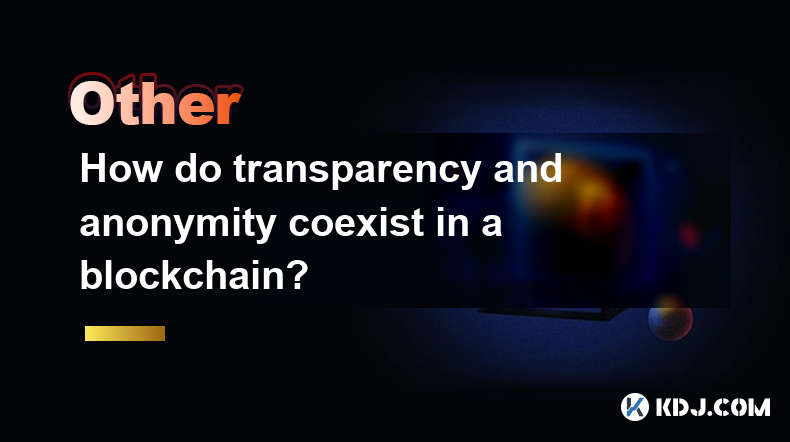
Key Points:
- Blockchain's inherent transparency is often contrasted with the desire for user anonymity. This apparent contradiction can be resolved through various techniques.
- Pseudonymity, not true anonymity, is the reality on most public blockchains. Transactions are visible, but user identities are masked.
- Several methods enhance privacy on blockchains, including zero-knowledge proofs, mixing services, and privacy coins.
- Each method carries trade-offs between privacy and efficiency, impacting transaction speed and costs.
- Regulatory concerns and the potential for illicit activities necessitate a careful balance between transparency and anonymity.
How do transparency and anonymity coexist in a blockchain? This question probes a core tension within the cryptocurrency landscape. Blockchains, by design, record every transaction publicly and immutably. This transparency is a crucial aspect of their security and trust. However, many users desire privacy, raising the question of how these seemingly opposing forces can coexist. The answer lies in a nuanced understanding of what blockchain transparency truly entails and the techniques employed to enhance user privacy.
The first point to clarify is that complete anonymity on a public blockchain is generally unattainable. While transactions are recorded permanently, the identities of the participants are typically obscured. This is achieved through the use of pseudonymous addresses, long strings of alphanumeric characters that act as identifiers without directly revealing the user's real-world identity.
This pseudonymity allows for a degree of privacy. Anyone can see the transaction history, but linking those transactions to specific individuals requires additional information, often unavailable to the public. However, this is not true anonymity; sophisticated analysis, subpoenas, or even simple correlation of on-chain activity with off-chain information can potentially de-anonymize users.
To enhance privacy further, various cryptographic techniques and blockchain designs are employed. Zero-knowledge proofs, for example, allow users to prove the validity of a transaction without revealing any other information about the transaction itself. This is a powerful tool for preserving privacy while maintaining the integrity of the blockchain.
Mixing services, also known as coin mixers or tumblers, further obfuscate the origin and destination of funds. These services combine multiple transactions, making it difficult to trace the flow of cryptocurrency back to its source. However, the use of such services can be controversial, as they can be used to obscure illicit activities.
Privacy coins, such as Monero and Zcash, are designed from the ground up to prioritize user anonymity. These cryptocurrencies employ advanced cryptographic techniques to obscure transaction details, making it significantly more challenging to track the movement of funds. However, this increased privacy comes at the cost of potential reduced efficiency and sometimes increased complexity for users.
The implementation of these privacy-enhancing technologies raises several important considerations. Firstly, there's the trade-off between privacy and efficiency. Advanced cryptographic techniques often require more computational power, leading to slower transaction speeds and higher fees. This is a critical factor for users and developers alike.
Secondly, the regulatory landscape surrounding cryptocurrency privacy is constantly evolving. Governments worldwide are grappling with the implications of untraceable transactions, and regulations are being developed to balance the need for financial transparency with the protection of individual privacy. The challenge lies in creating regulations that effectively prevent illicit activity without stifling innovation or infringing on legitimate privacy rights.
The balance between transparency and anonymity in blockchain technology is a complex and ongoing discussion. While the inherent transparency of the blockchain is essential for its security and trust, the demand for user privacy necessitates the development and implementation of advanced cryptographic techniques and blockchain designs. The challenge is to find a balance that safeguards both principles, ensuring the responsible and ethical use of this powerful technology.
Frequently Asked Questions:
Q: Is it possible to be completely anonymous on a public blockchain?
A: No. While pseudonymity is achievable through the use of public keys, true anonymity is generally not possible on a public blockchain due to the inherent transparency of transaction records. Sophisticated analysis can potentially link pseudonymous addresses to real-world identities.
Q: What are the risks associated with using privacy-enhancing technologies?
A: The risks include slower transaction speeds, higher fees, and the potential for misuse in illicit activities. Furthermore, regulatory scrutiny of privacy-enhancing technologies is increasing, potentially leading to legal complications.
Q: How do zero-knowledge proofs enhance privacy on a blockchain?
A: Zero-knowledge proofs allow users to prove the validity of a transaction without revealing any other information about the transaction, such as the amounts involved or the participants' identities. This protects sensitive information while still allowing the transaction to be verified on the blockchain.
Q: What are the differences between privacy coins and regular cryptocurrencies?
A: Privacy coins, like Monero and Zcash, incorporate advanced cryptographic techniques to obscure transaction details by default, making it significantly harder to trace the flow of funds compared to regular cryptocurrencies like Bitcoin or Ethereum, which have more transparent transaction histories.
Q: What role do regulations play in the balance between transparency and anonymity?
A: Regulations are crucial in balancing the need for financial transparency to prevent illicit activities, such as money laundering and terrorist financing, with the protection of individual privacy rights. The challenge is to create effective regulations that don't stifle innovation or unduly restrict legitimate use of privacy-enhancing technologies.
Disclaimer:info@kdj.com
The information provided is not trading advice. kdj.com does not assume any responsibility for any investments made based on the information provided in this article. Cryptocurrencies are highly volatile and it is highly recommended that you invest with caution after thorough research!
If you believe that the content used on this website infringes your copyright, please contact us immediately (info@kdj.com) and we will delete it promptly.
- Ethena Labs Unveils Converge, a New Layer-1 Blockchain Targeting Tokenized Real-World Assets
- 2025-04-19 12:20:14
- FBI Releases Five Warnings to Help Protect Investors in the Cryptocurrency Space
- 2025-04-19 12:20:14
- Today, the Official Trump ($TRUMP) meme coin tokens have been unlocked, sparking panic among investors.
- 2025-04-19 12:15:14
- Dogecoin (DOGE) Price Prediction: Will the Original Memecoin Reach $1 by Late Summer 2025?
- 2025-04-19 12:15:14
- Resilience is a Distinct Attribute of Solana
- 2025-04-19 12:10:13
- Astar Network Adjusts Its Token Issuance Model to Stabilize APY and Reduce Inflation
- 2025-04-19 12:10:13
Related knowledge
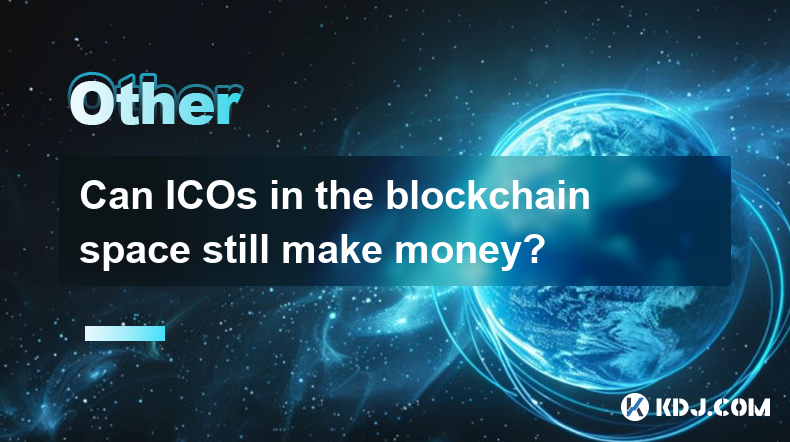
Can ICOs in the blockchain space still make money?
Apr 17,2025 at 08:29pm
The landscape of Initial Coin Offerings (ICOs) in the blockchain space has evolved significantly since their peak in 2017 and 2018. Despite the increased regulatory scrutiny and the rise of alternative fundraising methods like Security Token Offerings (STOs) and Initial Exchange Offerings (IEOs), ICOs can still be a viable way to raise funds and generat...

Can the application of blockchain in supply chain finance bring benefits?
Apr 15,2025 at 04:00pm
Can the application of blockchain in supply chain finance bring benefits? The integration of blockchain technology into supply chain finance has garnered significant attention in the cryptocurrency and financial sectors. This article explores how blockchain can potentially revolutionize supply chain finance, detailing its benefits and providing a compre...
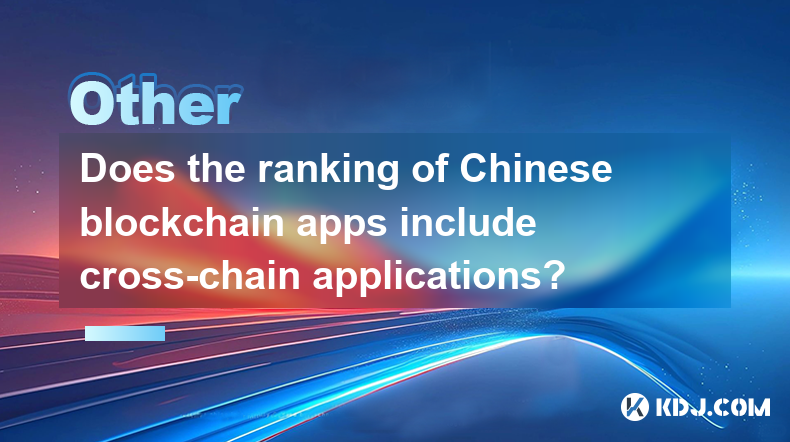
Does the ranking of Chinese blockchain apps include cross-chain applications?
Apr 14,2025 at 04:00pm
The ranking of Chinese blockchain apps is a comprehensive evaluation that takes into account various aspects such as user base, transaction volume, and technological innovation. A pertinent question arises regarding whether these rankings include cross-chain applications. Cross-chain applications, which allow different blockchain networks to interact an...
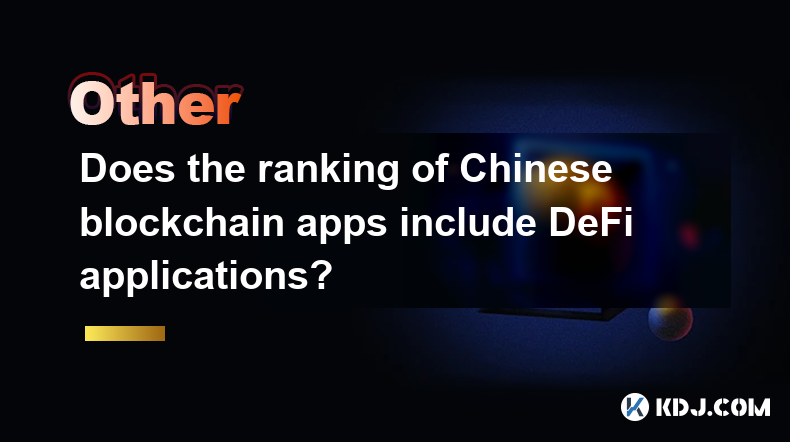
Does the ranking of Chinese blockchain apps include DeFi applications?
Apr 15,2025 at 06:57am
The ranking of Chinese blockchain apps is a comprehensive list that showcases the most popular and influential applications within the cryptocurrency ecosystem. One question that often arises is whether these rankings include DeFi applications. To answer this, we need to delve into the specifics of how these rankings are compiled and what types of appli...
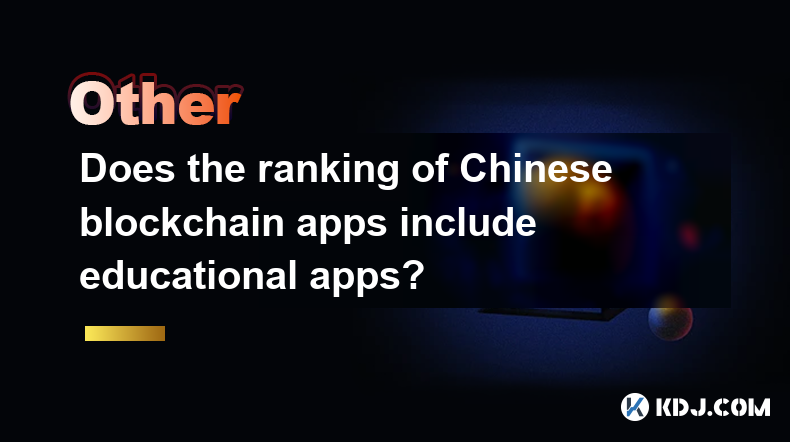
Does the ranking of Chinese blockchain apps include educational apps?
Apr 16,2025 at 03:35am
The ranking of Chinese blockchain apps often includes a variety of categories, from finance and gaming to social networking and beyond. One question that frequently arises is whether these rankings include educational apps. To address this, we need to delve into the specifics of how blockchain apps are categorized and ranked in China, and whether educat...
Does the ranking of Chinese blockchain apps include enterprise-level applications?
Apr 15,2025 at 06:42am
The ranking of Chinese blockchain apps often includes a variety of applications, ranging from consumer-focused to enterprise-level solutions. Understanding the scope and criteria for these rankings is essential to determine if enterprise-level applications are included. This article delves into the specifics of how Chinese blockchain app rankings are co...

Can ICOs in the blockchain space still make money?
Apr 17,2025 at 08:29pm
The landscape of Initial Coin Offerings (ICOs) in the blockchain space has evolved significantly since their peak in 2017 and 2018. Despite the increased regulatory scrutiny and the rise of alternative fundraising methods like Security Token Offerings (STOs) and Initial Exchange Offerings (IEOs), ICOs can still be a viable way to raise funds and generat...

Can the application of blockchain in supply chain finance bring benefits?
Apr 15,2025 at 04:00pm
Can the application of blockchain in supply chain finance bring benefits? The integration of blockchain technology into supply chain finance has garnered significant attention in the cryptocurrency and financial sectors. This article explores how blockchain can potentially revolutionize supply chain finance, detailing its benefits and providing a compre...

Does the ranking of Chinese blockchain apps include cross-chain applications?
Apr 14,2025 at 04:00pm
The ranking of Chinese blockchain apps is a comprehensive evaluation that takes into account various aspects such as user base, transaction volume, and technological innovation. A pertinent question arises regarding whether these rankings include cross-chain applications. Cross-chain applications, which allow different blockchain networks to interact an...

Does the ranking of Chinese blockchain apps include DeFi applications?
Apr 15,2025 at 06:57am
The ranking of Chinese blockchain apps is a comprehensive list that showcases the most popular and influential applications within the cryptocurrency ecosystem. One question that often arises is whether these rankings include DeFi applications. To answer this, we need to delve into the specifics of how these rankings are compiled and what types of appli...

Does the ranking of Chinese blockchain apps include educational apps?
Apr 16,2025 at 03:35am
The ranking of Chinese blockchain apps often includes a variety of categories, from finance and gaming to social networking and beyond. One question that frequently arises is whether these rankings include educational apps. To address this, we need to delve into the specifics of how blockchain apps are categorized and ranked in China, and whether educat...

Does the ranking of Chinese blockchain apps include enterprise-level applications?
Apr 15,2025 at 06:42am
The ranking of Chinese blockchain apps often includes a variety of applications, ranging from consumer-focused to enterprise-level solutions. Understanding the scope and criteria for these rankings is essential to determine if enterprise-level applications are included. This article delves into the specifics of how Chinese blockchain app rankings are co...
See all articles
























































































